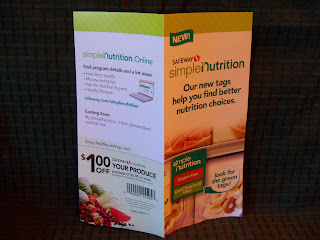
The following codes allow you to get any $1 movie for FREE. They expire July 22.
62MDEB7
23ZGDB8
86EHJR3
29KBDJ5
44NCRP7
35SVEM6
33MMMT9




 3. Once you have been couponing for a little while, you will begin to recognize products for which there were recent coupons. To help me remember where that coupon is or to find a coupon to print I check sale items on my list against a coupon database.
3. Once you have been couponing for a little while, you will begin to recognize products for which there were recent coupons. To help me remember where that coupon is or to find a coupon to print I check sale items on my list against a coupon database.  4. I fine tune my list, keeping the best deals and saving the so-so deals for another week. For example, Ronzoni pasta is $1 and I knew there were $1 coupons available that could make pasta FREE. Unfortunately the coupons were for the vegetable variety, which were not part of the $1 sale. So, I crossed Ronzoni off my list and will wait for the vegetable variety to go on sale for $1 (as they were at Save Mart a few months ago). Then, I combine both lists (my list and the list from The Frugal Find) to create my final list.
4. I fine tune my list, keeping the best deals and saving the so-so deals for another week. For example, Ronzoni pasta is $1 and I knew there were $1 coupons available that could make pasta FREE. Unfortunately the coupons were for the vegetable variety, which were not part of the $1 sale. So, I crossed Ronzoni off my list and will wait for the vegetable variety to go on sale for $1 (as they were at Save Mart a few months ago). Then, I combine both lists (my list and the list from The Frugal Find) to create my final list. 5. I cut out the coupons and place them inside my list (original Frugal Find list folded in half).
5. I cut out the coupons and place them inside my list (original Frugal Find list folded in half). Notice the $1 coupon says manufacturer's coupon at the top and the numerical code at the bottom begins with a 5. The Raley's coupon begins with 0. I read the coupons to make sure that the sizes match up. I also noticed that the Raley's coupon says limit 2 so I can use a second manufacturer's coupon to get 2 packages for $.69 each.
Notice the $1 coupon says manufacturer's coupon at the top and the numerical code at the bottom begins with a 5. The Raley's coupon begins with 0. I read the coupons to make sure that the sizes match up. I also noticed that the Raley's coupon says limit 2 so I can use a second manufacturer's coupon to get 2 packages for $.69 each.














